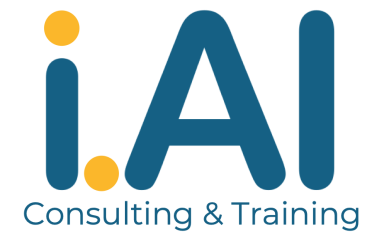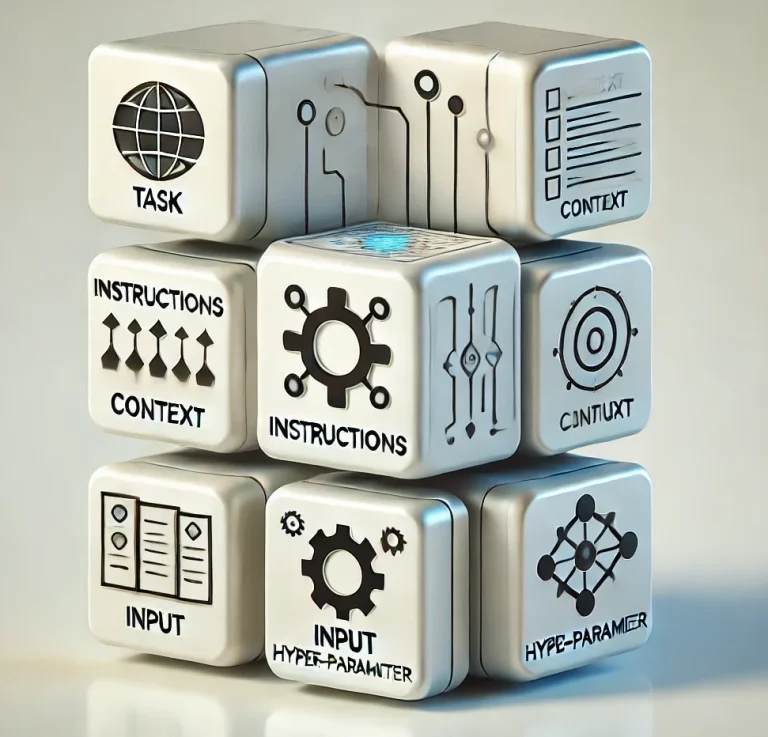PROMPT ENGINEERING
Here you’ll find everything you need to know about prompt engineering:
Details on the structure and components of an effective prompt,
prompting strategies, and prompting frameworks.
1. Prompt Components & Structure
Prompt components provide a structured framework to effectively influence the responses of language models.
Generally, prompts consist of three main components:
The task, instructions and context.
Depending on the use case, additional input can be added to further specify the task or provide documents for the AI model to process. Optional parameters, such as temperature or token limits, can also be defined to fine-tune the model’s output.
Task
Instructions provide the
AI with precise directions
on how to complete the task, including style,
format, or tone.
Context provides background information to help the AI understand the request in the correct context.
Input refers to
specific data or
content provided
to the AI to help it
complete the task.
Parameters allow fine-tuning of the output through settings like temperature or response length.
The task defines the specific job the AI is supposed to accomplish.
Instructions
Context
Input
Parameter
DEEP DIVES
Follow these links for deep dives
into specific prompt components.
2. Prompting Strategies

Prompting strategies help to steer the dialogue (chat) with an AI model more effectively.
There are different strategies, such as zero-shot (no examples), few-shot (examples as context), chain-of-thought (step-by-step thinking), and self-consistency prompting (repeated same prompt for more reliable answers). The suitability of each strategy depends on factors like task complexity, and the availability of time and resources.
Fundamental Techniques.
These techniques form the foundation of prompt engineering and are particularly suited for tasks of simple to medium complexity.

Thinking & Reasoning Techniques.
Combinatorial Techniques.
These techniques are designed to enable the model to carry out complex thinking and reasoning processes.
These techniques combine various approaches and transform inputs to enhance model efficiency and accuracy.


3. Prompting Frameworks
Prompting frameworks are structured methods for creating precise and relevant inputs for AI models.
By providing clear guidelines, context, and targeted instructions, they bridge the gap between human intent and machine understanding. This improves the reliability and usefulness of AI-generated content across various fields—from content creation to solving complex problems. Interacting with AI becomes more efficient and impactful.

Task-Specific Frameworks.
Task-specific frameworks are precise prompt guidelines
for tasks of lower complexity, ensuring consistent and targeted outputs.


Instruction-Based Frameworks.
Context-Based Frameworks.
Instruction-Based Frameworks liefern klare, detaillierte Anweisungen, die sich insbesondere für den Einsatz bei komplexen Fragestellungen eignen.
Context-Based Frameworks fokussieren auf die detaillierte
Beschreibung relevanter Umstände und Informationen, um die KI auf spezifische Faktoren und Rahmenbedingungen auszurichten.






©Urheberrecht. Alle Rechte vorbehalten.
Wir benötigen Ihre Zustimmung zum Laden der Übersetzungen
Wir nutzen einen Drittanbieter-Service, um den Inhalt der Website zu übersetzen, der möglicherweise Daten über Ihre Aktivitäten sammelt. Bitte überprüfen Sie die Details in der Datenschutzerklärung und akzeptieren Sie den Dienst, um die Übersetzungen zu sehen.























